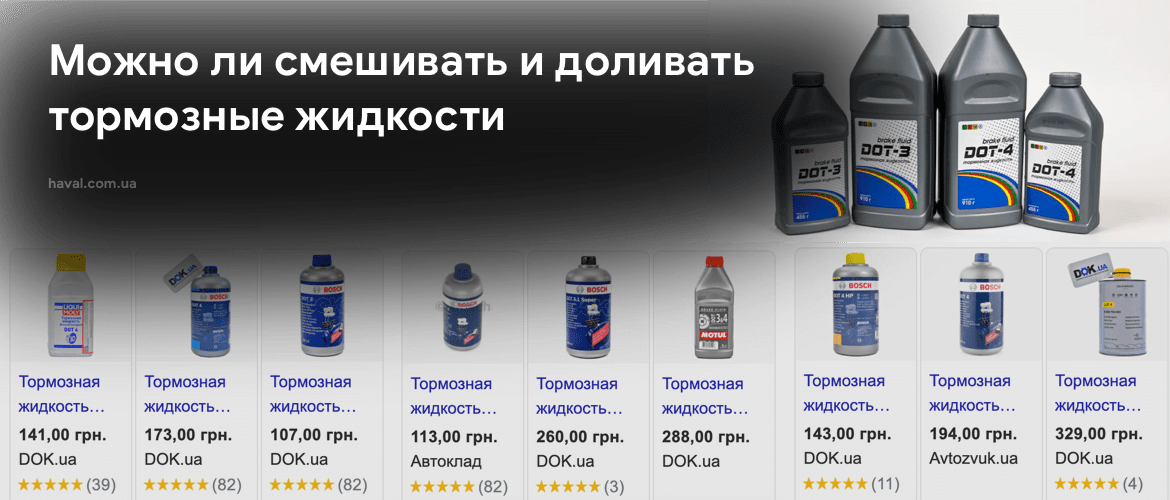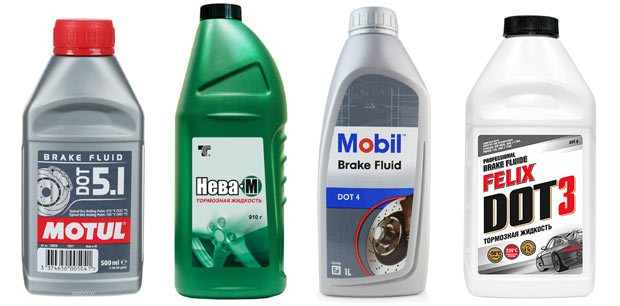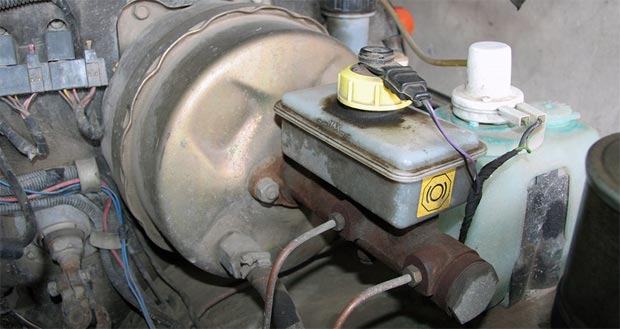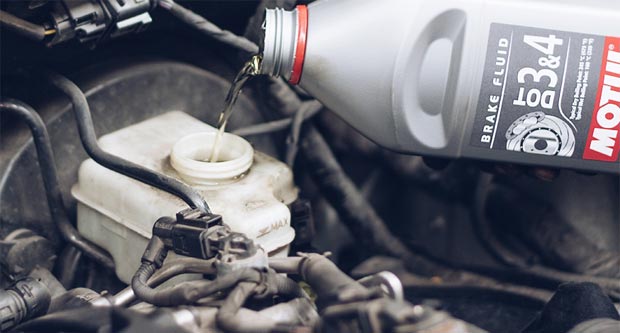
Can I mix brake fluid from different manufacturers?
Content
Types of brake fluids and their characteristics
Currently, the most widely used brake fluids are classified according to the standard of the US Department of Transportation (Department of Transportation). Short for DOT.
According to this classification, more than 95% of all vehicles today use one of the following fluids:
- DOT-3;
- DOT-4 and its modifications;
- DOT-5;
- DOT-5.1.
Domestic liquids "Neva" (similar in composition to DOT-3, usually modified with additives that increase the freezing point), "Rosa" (analogous to DOT-4) and the like are becoming less common. The reason for this was the almost universal transition of Russian manufacturers to labeling according to the American standard.


Briefly consider the main characteristics and scope of the above brake fluids.
- DOT-3. Outdated glycol fluid. It is mainly used in foreign cars over 15-20 years old and in VAZ classics. Possesses high hygroscopicity (ability to accumulate water in volume). The boiling point of a fresh liquid is approximately 205°C. After the accumulation of more than 3,5% water of the total liquid volume, the boiling point drops to about 140°C. Behaves quite aggressively towards certain plastics and rubbers.
- DOT-4. Used in relatively new cars. The base is polyglycol. It has greater resistance to moisture absorption from the environment. That is, it lasts a little longer (on average, for six months or a year). However, additives that reduce hygroscopicity and level chemical aggression slightly thickened this liquid. At -40°C, the viscosity is slightly higher than other DOT fluids. The boiling point of a "dry" liquid is 230°C. Moisture (more than 3,5%) reduces the boiling point to 155°C.
- DOT-5. silicone fluid. Does not absorb moisture from the environment. Some accumulation of moisture is possible in the form of condensate. However, the water does not mix with the silicone base and precipitates (which can also cause negative effects). DOT-5 fluid is chemically neutral. Boils at a temperature not lower than 260°C. It has good fluidity at low temperatures.


- DOT-5.1. Modified for sports cars (or new vehicles) glycol composition. The liquid has a very low viscosity. It will only boil after passing the 260°C point (at 3,5% humidity, the boiling point drops to 180°C). It has good resistance to low temperatures.
The last two fluids are used only if this is precisely determined by the car's operating instructions. These fluids can adversely affect older brake systems, where low viscosity can cause the system to malfunction and cause brake caliper and piston leaks.


Miscibility of brake fluids from different manufacturers
Immediately about the main thing: all the considered brake fluids, except for DOT-5, can be partially mixed with each other, regardless of the manufacturer. It is the class that matters, not the manufacturer.
Variants with different bases are categorically incompatible with each other. When mixing silicone (DOT-5) and glycol bases (other options), fractionation will occur with all the ensuing consequences. Due to the heterogeneity, the liquid will react differently when heated and cooled. The probability of formation of local gas plugs will increase many times over.
Liquids DOT-3, DOT-4 and DOT-5.1 can in theory be temporarily mixed together. Just be sure to check if these fluids are designed to work with ABS if you have this system installed. There will be no critical consequences. However, this can be done only in extreme cases and for a short time. And only when the desired liquid is not available for one reason or another. But if your car uses DOT-4 brake fluid from the factory, and it is possible to purchase it, you should not save and take cheaper DOT-3. In the long term, this will lead to accelerated destruction of the system seals or problems in the ABS system.


Also, you don't need to buy an expensive DOT-5.1 if the system is not designed for it. It doesn't make sense. Gas formation and sudden brake failure will not occur if the system is in good condition. However, a difference of almost 2 times in low-temperature viscosity can depressurize the brake system. How does this happen? At negative temperatures, rubber seals lose their elasticity. On cars designed for DOT-3 or DOT-4, the liquid also thickens proportionally. And a thick “brake”, if it flows through the offered hardened seals, then in a small amount. If you fill in low-viscosity DOT-5.1, then in winter you need to be prepared for its leakage. Especially in severe frosts.
Various modifications of DOT-4 (DOT-4.5, DOT-4+, etc.) can be mixed with each other without restrictions. In such an important issue as the composition of the brake fluid, all manufacturers strictly adhere to standards. If it is written on the can that it is DOT-4, then, with minor exceptions, the composition will contain the same components, regardless of the manufacturer. And differences in chemical composition should not affect compatibility in any way.


Watch this video on YouTube